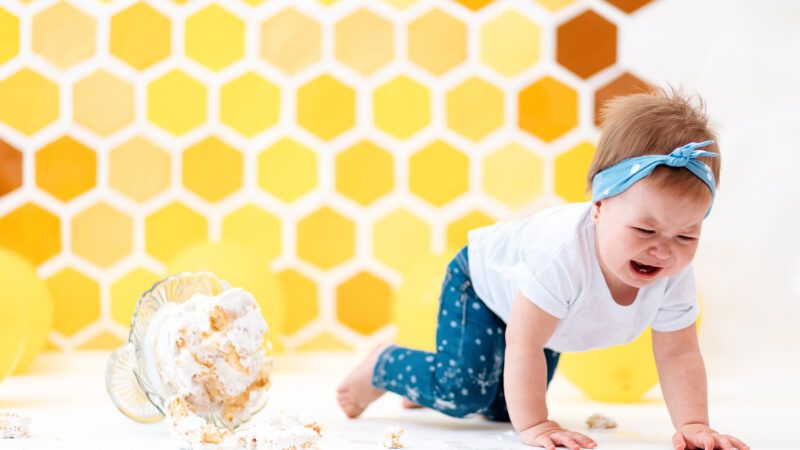OCD Won't Make You a Better Parent
"Like an addictive drug, the reassurances had less effect each time."

If you're wondering where our culture is headed, take a look at this column in The New York Times: "A Marriage Stressed by Obsessions and Compulsions." Nicole Comforto, a novelist in Seattle, writes about the first time her husband seemed to freak out about a non-danger. He'd spotted a red spot on their four-month-old's lip and immediately went to Google it.
The results had him so distressed that "he even had to put his head between his knees to keep from passing out," writes Comforto. Naturally, with enough searching, he found evidence that the red spot could mean his son had a fatal disease. (He didn't.)
Gradually, the husband's worries started to metastasize. He grew afraid of their backyard blueberries (had chemicals leached into the soil?), leftovers (botulism!), and running a kid over (okay, I have that fear too).
One time, after he tossed a bit of scrap lumber into the wood stove, he succumbed to absolute grief, convinced that the wood "was probably treated with arsenic."
Diagnostically, this is obsessive-compulsive disorder, or OCD. But it is also modern parenting. The poor guy has it worse than most, but he is standing—shaking, hyperventilating—on a platform built for all parents, thanks to the entire child safety industrial complex.
Pick up any copy of Parents magazine and you will be inducted into this scared new world. One of its archetypal cover stories was the "Ten Hidden Health Hazards in Your Home." Hazard number one? The laundry hamper.
Exhibiting exactly the same compulsion to leap from incredibly remote danger to immediate threat, the magazine said that hampers made from fabric stretched around a wire may seem safe, but what happens if the wire suddenly springs free and your kid is right there and it slices his eye? Blindness, that's what happens.
The entire parenting world thrives on implanting and augmenting OCD. That's why there are classes teaching kids to crawl in gyms advertised as a safe place for kids to learn to wiggle, look around, and listen.
As if your home is Area 51. As if whatever your child was born with (knees, skulls, curiosity) isn't safe enough, and no environment is safe enough either, if it isn't a "professionally developed indoor climbing and play structure."
In her column, Comforto says she and her husband finally found a specialist who explained that this compulsion was to research and seek reassurance. "Like an addictive drug, the reassurances had less effect each time, so he required more and more to get over his fear," writes Comforto.
But when you live in a society that doesn't even require research to discover danger, it's almost impossible to stay sane. In August, the Consumer Product Safety Commission recalled children's socks with a pompom on the ankle because the pompom can fall off and pose—what else?—a choking hazard.
By the time a pompom is classified as a deadly threat, you are living in an OCD culture.
The prescription for dad was to expose himself to the things he found most scary—like wearing dirty shoes into the house—and discover that this didn't result in death. Don't succumb to the brain-eating, joy-draining belief that we can make our kids completely safe if only we control for every variable, supervise every interaction, and throw out the laundry hamper.



Show Comments (83)